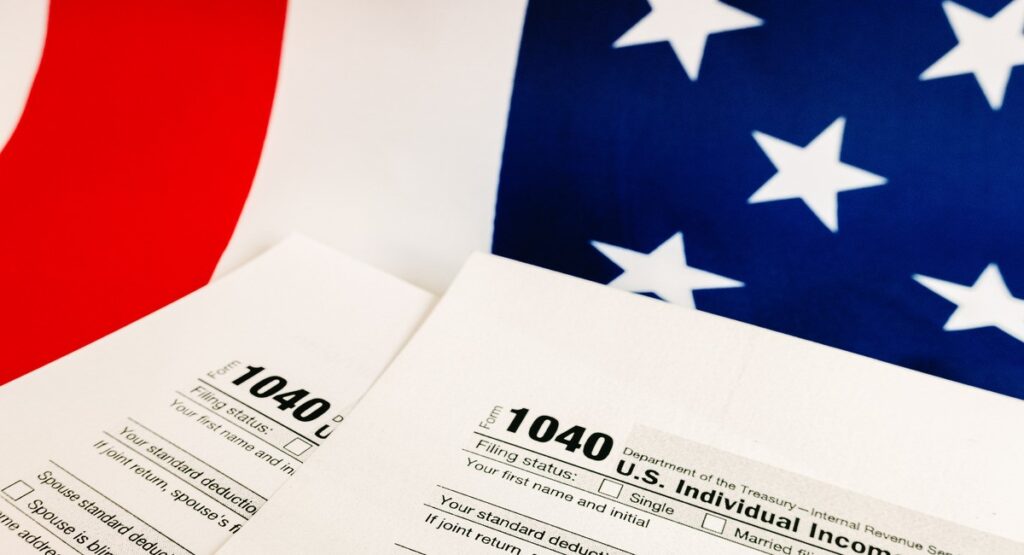When tax season arrives, most people are familiar with the basic Form 1040, but there are several supporting documents that may also be required depending on your financial situation. One of the most common among them is Schedule 1, an essential part of the federal tax form Schedule 1 filing process.
If you’re wondering what is Schedule 1 tax form and whether it applies to you, this guide breaks it all down—so you can file with confidence and accuracy. If the process seems overwhelming, we offer expert income tax services to ensure you file correctly, report additional income, and take advantage of any available deductions.
Understanding Form 1040 Schedule 1
Schedule 1 (Form 1040) is a supplemental tax document used to report types of income and deductions that aren’t included on the main 1040 form. It allows the IRS to capture a more complete view of your financial situation.
The form is divided into two sections. The first covers additional sources of income such as self-employment earnings, unemployment benefits, gambling or prize winnings, and alimony received from agreements finalized before 2019. The second section focuses on adjustments to income—including deductions for student loan interest, contributions to Health Savings Accounts (HSAs), and retirement account contributions.
If any of these apply to you, attaching Schedule 1 to your 1040 is necessary to accurately calculate your adjusted gross income and potentially reduce the taxes you owe.
Why Schedule 1 Matters for Taxpayers
The purpose of Form 1040 Schedule 1 is to ensure that all sources of income and eligible deductions are properly reported. This helps provide a more accurate calculation of your taxable income.
It’s especially important for individuals whose finances go beyond standard W-2 wages. If you’re self-employed, received unemployment benefits, or made contributions to retirement accounts, this form is a key part of your federal tax return.
Leaving it out when it’s required could lead to underreporting income or missing out on deductions that may lower your tax liability.
Schedule 1 Instructions: How to Fill It Out
To complete Schedule 1 (Form 1040) accurately, it’s important to understand its two main sections: one for reporting additional income and the other for adjustments to income. The totals from both sections are transferred to your Form 1040, helping calculate your adjusted gross income.
Getting Started: What You’ll Need
Before you begin filling out the form, follow these basic steps to ensure accuracy:
- Gather Income Documents: Collect any records related to additional income—like 1099 forms or freelance income statements.
- Review Adjustments: Look into any deductions you may be eligible for, such as student loan interest or educator expenses.
- Complete the Form: Carefully enter your additional income and adjustments in the appropriate sections of Schedule 1.
- Attach to Form 1040: Once completed, include Schedule 1 with your federal tax return when you file Form 1040.
Part I – Additional Income
This section covers income not reported directly on the 1040 form. You’ll need to fill it out if you earned:
- State tax refunds
- Alimony received (for agreements before 2019)
- Business income or losses (Schedule C)
- Capital gains from business property (Form 4797)
- Rental, royalty, or partnership income (Schedule E)
- Farm income or losses (Schedule F)
- Unemployment compensation
- Other income, such as:
- Gambling winnings
- Cancellation of debt
- Jury duty pay
- Prizes or awards
- Cryptocurrency or digital assets
- Scholarships not reported on a W-2
Some entries require additional forms—check IRS instructions for specifics.
Part II – Adjustments to Income
This section includes deductions that can reduce your taxable income. Common adjustments include:
- Educator expenses
- Business expenses for reservists, performing artists, and fee-basis government officials
- Health savings account deduction
- Moving expenses for Armed Forces members
- Deductible self-employment tax
- Self-employed retirement plan contributions
- Self-employed health insurance
- Early withdrawal penalty
- Alimony paid
- IRA and student loan interest deductions
- Archer MSA deduction
- Other adjustments (e.g., jury duty pay, Olympic medal exemptions, reforestation expenses)
These deductions lower your adjusted gross income, which may reduce the amount of tax you owe. Always refer to the official IRS Schedule 1 instructions for full guidance.
Who Needs to File Federal Tax Form Schedule 1?
Not everyone needs to attach Schedule 1 to their federal income tax return. The IRS simplified the Form 1040, allowing taxpayers to add forms as needed. You only need to file Schedule 1 if you have additional income or adjustments to income, such as freelance or gig income, unemployment benefits, alimony (from agreements prior to 2019), student loan interest deductions, or contributions to an HSA or IRA. If your return is straightforward with only W-2 wages and you’re taking the standard deduction, you likely won’t need this form. However, with diverse income sources today, more taxpayers are finding that Schedule 1 applies to them.
Let Mayatax Simplify the Process
Navigating IRS forms can feel overwhelming, especially when additional income or deductions come into play. If you’re unsure whether you need to file Schedule 1 or need help understanding it, our team at Mayatax is here to guide you every step of the way.
We do more than just prepare your taxes—we ensure you’re claiming every eligible deduction, maintaining full IRS compliance, and maximizing your refund. Whether you’re a freelancer, investor, or dealing with a complex tax year, we’ve got the expertise to make tax season stress-free.
Take the hassle out of tax filing—let Mayatax handle it while you focus on what matters most.

